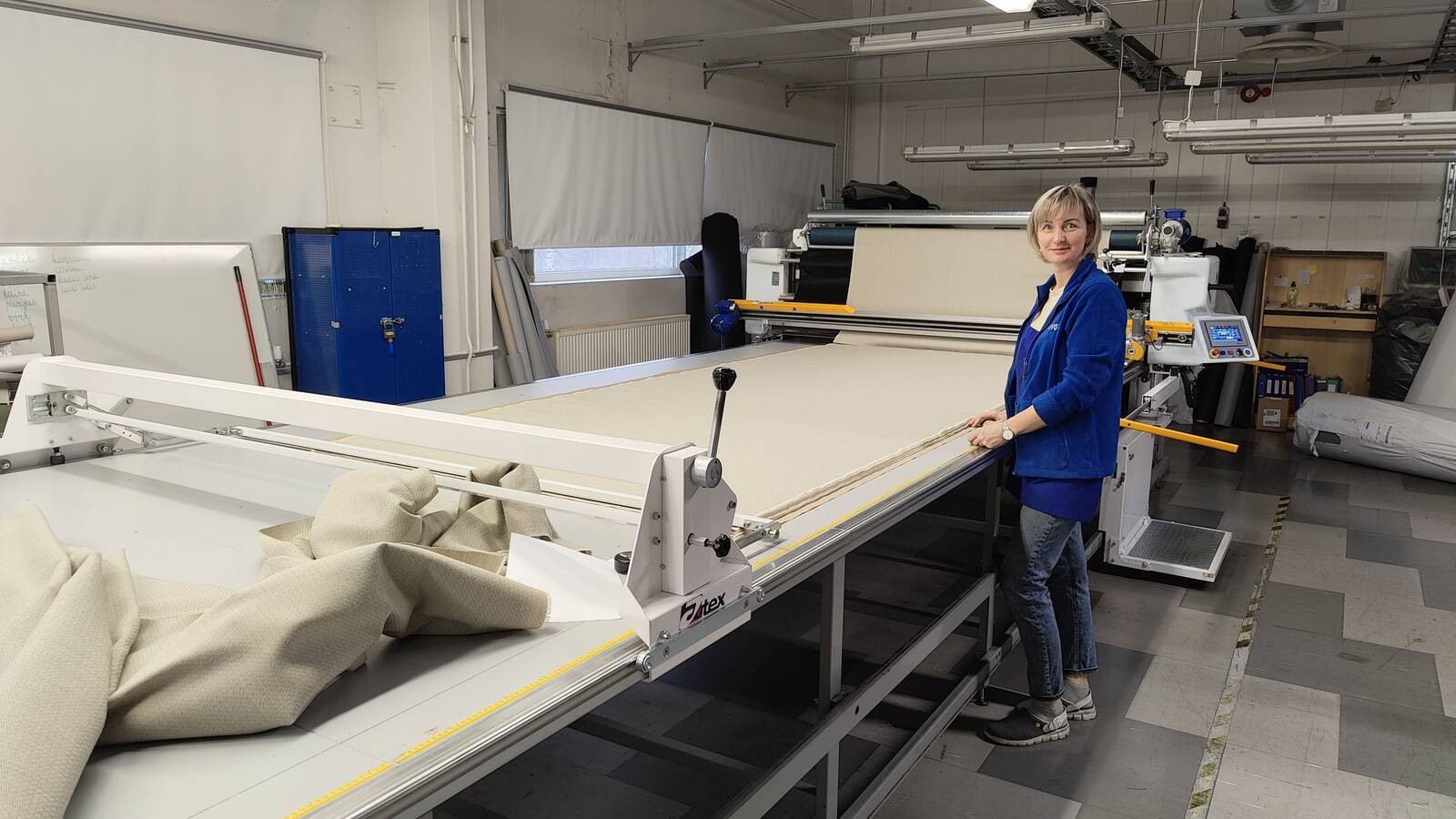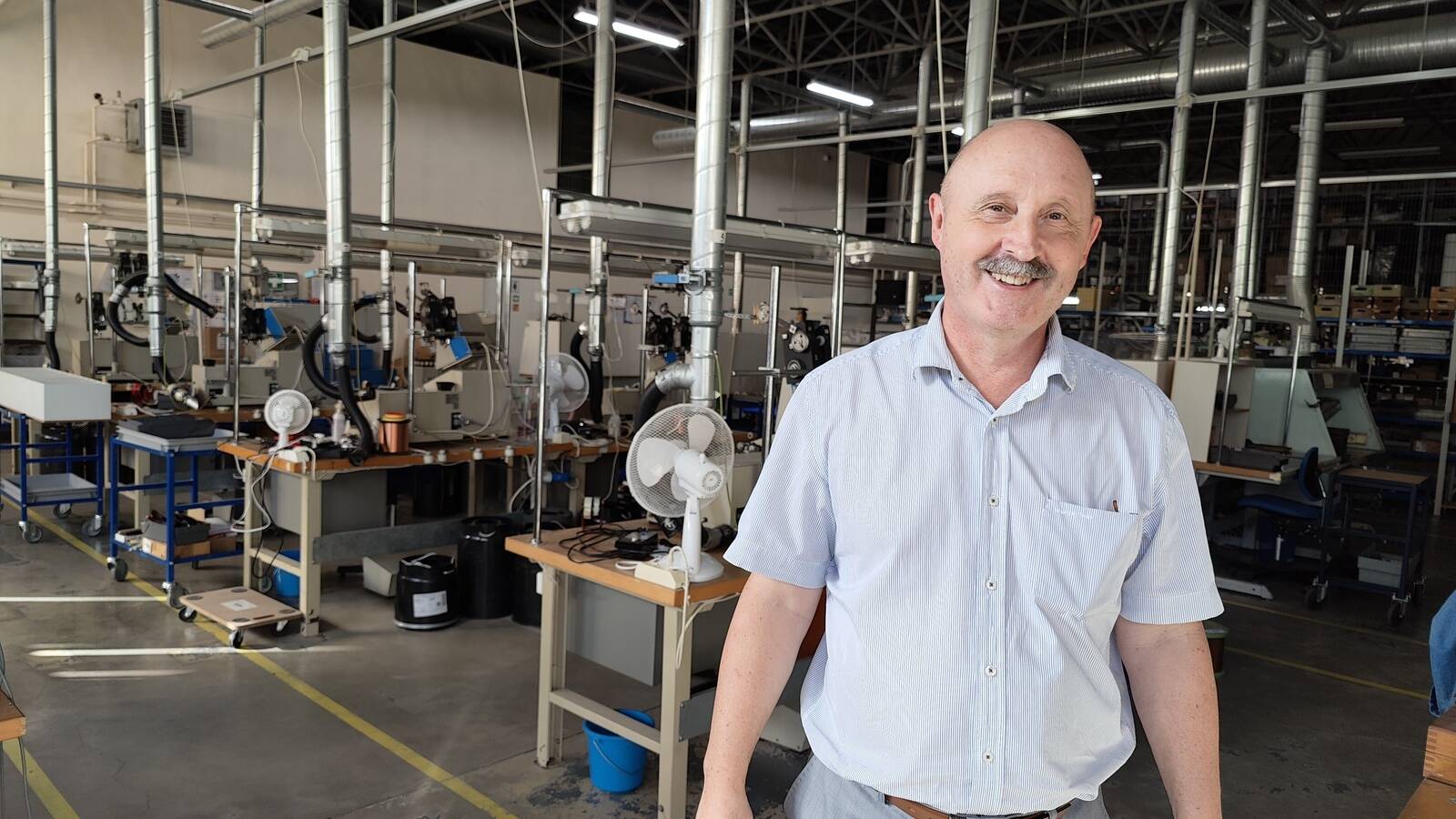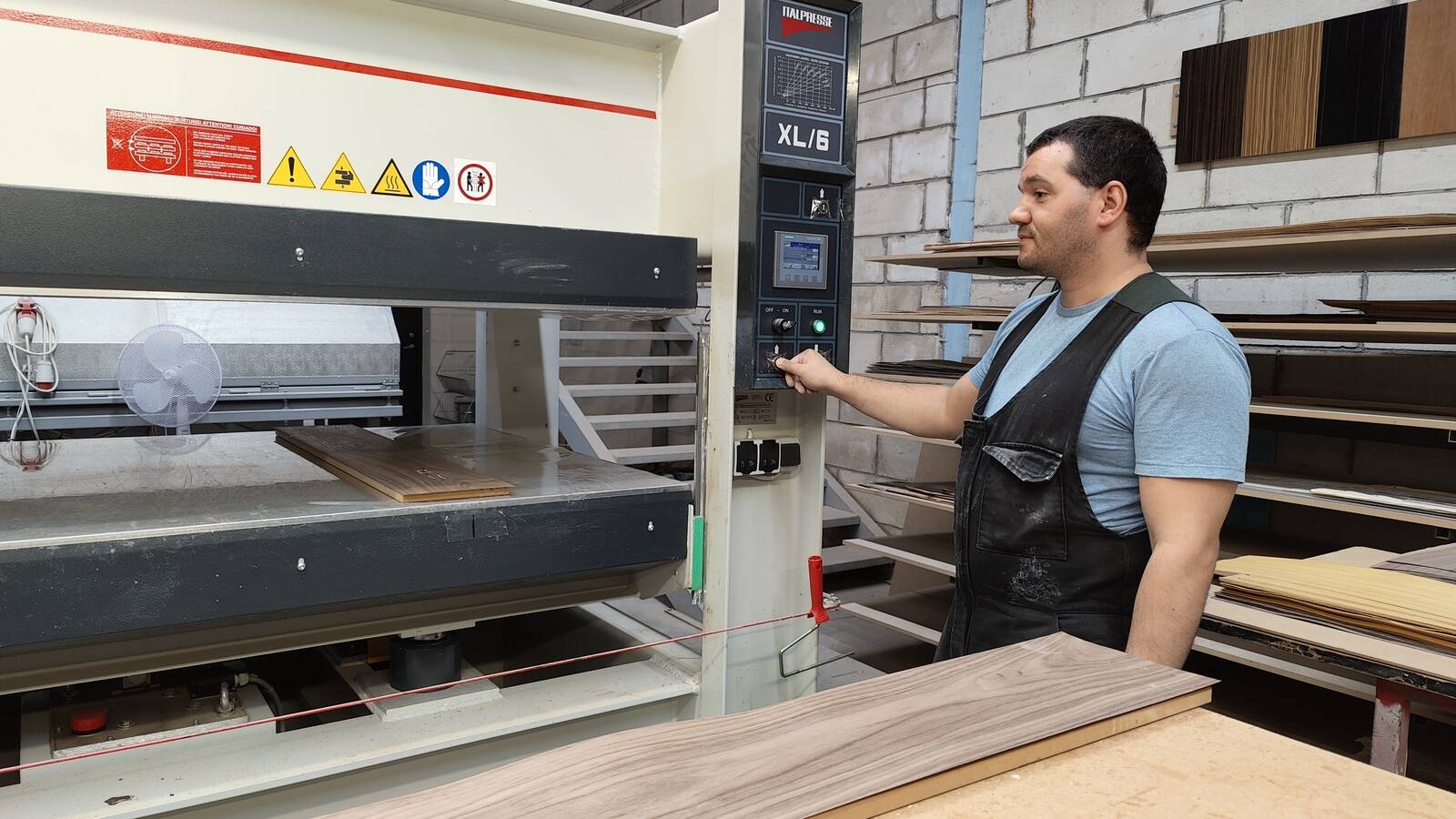Heads of successful Ida-Virus industrial enterprises note that specialists have to be trained or further trained on their own, since the “old reserves” of qualified workers in the region are coming to an end, and young people are not ready to start working immediately after studying. And not all young people even want to work in factories.
The OSKA project, which forecasts the need for specialties, even talks about the potential for attracting foreign labor to Ida-Viru County, but for this the region needs a different level of knowledge not only of Estonian, but also of professional English.
If previously large schools trained many workers for large factories, now in their place are medium-sized enterprises with complex computer equipment and very diverse labor needs.
The bench is very short
Nevotex Narva subcontracts the production of furniture parts and the furniture itself, which is sold under expensive Scandinavian brands. At the production site in Narva, the number of people fluctuates slightly depending on the availability of orders. Now there are about 60 people working, and the company is looking for several additional workers – cutters, furniture assemblers, seamstresses.
The company operates in the building of a former Krenholm garment factory. It was the bankrupt Krenholm and the Narva furniture factory that were initially important sources of personnel. But now former employees of the old industrial giants are already retired.
“This resource is almost exhausted,” says company director Yuri Sayya. – I see that we circle around the same people. We hire back those whom we laid off two or three years ago. Completely new people don’t come often. Only in the last year have completely new faces appeared – yesterday’s students. People from Krenholm are still working, and several people from the furniture factory. And if we are looking for someone, they start calling their acquaintances and friends. But there are few such people, and pensioners no longer want to work.”
During Krenholm’s heyday, there was a separate vocational school in Narva that trained workers for it. Currently, at the Vocational Education Center, the Narva branch of which is located in the same building, young people are not taught the blue-collar skills required at Nevotex, although there are separate short-term courses for adults.
“Let’s be honest, training staff now is a big headache. There is absolutely no one for either textile production or furniture production. Finding a sewing production technologist in Estonia is almost impossible, says Yuri Saia. – The Tallinn Higher Technical School trains workers for the clothing industry – but these are, rather, designers. These are creative people, not those who stand at the machine with scissors. There are no such people at all; we either teach them ourselves or try to entice them.”
According to Yuri Say, he unsuccessfully published a vacancy for a technologist and conducted interviews four times. The company also decided to create its own furniture development department, said Saiya:
“We did the competition three times, we started in April, did it in the summer and again in the fall. There was a lot of interest – each time 40-50 CVs arrived, but there were 4-5 people left whom we invited for an interview. And when we started talking, it turned out that either their skills were very far from what we needed, or they did not meet the requirements.”
According to Say, their customers are English-speaking. But if a company requires candidates to have both special training and English, there is no one to hire. “There are old Soviet technologists, but without Estonian and English. And those who have knowledge of the language – without special training. And if everything matches, then the salary requirements are very high,” he states.
In fact, the solution may be to hire an “old school” specialist and an assistant who will be a translator and operator of modern equipment. But it’s too expensive, so the company is trying to do the training itself, says the manager:
“We never found a technologist, but we hired two people into the development department. One of them is a designer of metal products, not furniture, we hope to retrain him. The second person has English, knowledge of programs, but no work experience. And the same thing – we hope to tighten it up.”
Therefore, the image of Ida-Viru County as a region where there is a lot of labor available for business is already outdated, says Saja.
The career ladder begins with a children’s club
Audes LLC in Jõhvi employs approximately 80 people. The main products – expensive audio speakers – are entirely exported. The owner and manager of this plant, Igor Tyurin, also organizes training himself, since he is dissatisfied with the qualifications of the young workers who come to him after vocational training.
At the same time, he notes that working at a factory requires certain character traits, discipline, and the very desire to work and study:
“We have a CNC machine operator, a young guy who just had a desire to master the profession. From scratch, working independently, he learned programming, the ability to read blueprints, and understand how cutting tools work,” Tyurin said. “A person’s individual abilities are more important than taking courses and receiving a formal diploma.”
Igor Tyurin also sees a problem in the very initial level of education: in technical hobbies and interest groups:
“Before, if a person wanted to find a job as an electrician with us, I would ask: what radio did you build when you were in school? At the same time, I understood that a person knows how to solder, he has a soldering iron at home, he has a multimeter, he can set up, albeit a primitive, device for changing parameters… And now I ask: have you heard the word “soldering iron”?” – Tyurin sneers.
He also considers the small size of enterprises to be a big problem, which at the current technological stage is complemented by the diversity of specialties and the enterprises themselves. This does not allow professional technicians to train workers en masse, and factories to select the best, gather large groups for advanced training, and step by step promote top specialists to positions. Tyurin considers two examples familiar to him – former industrial giants in Estonia and large enterprises in Germany, before outsourcing began to be used en masse there.
“When a free position appeared, the management had a question, for example, which foreman should be promoted to deputy shop manager? After some time, the position of the head of the workshop became vacant, and which of the deputies can be pulled out for this position, and will he pull it?” – he explains.
According to Tyurin, the owners of current small and medium-sized industrial enterprises in Estonia are people who were once thrown out of the middle of this hierarchical pyramid, like himself:
“Also, for example, metalworking is now operating in Narva – the wreckage of something Soviet in the 90s was bought by some local peasants, they showed that they could do something, and large foreign concerns became interested – we’ll buy your company, and you will be the boss. And so that foreigners come to an empty place, start building, install equipment and start looking for people – there are few such examples. They have only just appeared in industrial parks.”
Lifelong learning
The head of the skills sector at the Ministry of Education and Research, Külli All, told the Far East that she is aware of the problem of the shortage of industrial specialists in Ida-Viru County:
“OSKA’s analysis of this problem shows that, unfortunately, many technical and manufacturing jobs are not popular among students, although the demand for workers in this field is high.”
The OSKA project advises companies and educational institutions to cooperate more actively. According to Külli All, enterprises themselves could finance training more, offer scholarships and talk about career growth, but the state should support these initiatives.
In her opinion, the example of a CNC machine operator at the Audes plant shows that labor requirements are becoming more specific and complex:
“The solution is clearly to spread lifelong learning and increase collaboration between companies and educational institutions so that employees can keep up with technology.”
Language problems prevent you from growing professionally
According to Külli All, English language skills among qualified professionals are part of a broader need than Nevotex’s Yuri Saya described. Therefore, from September 2025, as part of the vocational education reform, new study programs will begin, which will include more general education subjects, general skills training, as well as Estonian and English languages.
“In addition, there is no doubt that adults also need to be given the opportunity to additionally study the language,” added Külli All.
She said that upon completion of vocational training, it is mandatory to pass a professional exam organized by the employer.
“For example, last year at the Ida-Viru County Vocational Education Center, 943 students took the professional exam, of which 99 failed,” said Külli All. – In many specialties, all students passed the exam positively, but there were also those where they were not so successful. Largely due to insufficient knowledge of the Estonian language, less than half of the graduates passed the exam.”
Related articles
The Just Transition Fund has already been distributed at 70.6%, including 21.7 million euros out of the planned 25 million have already been spent on increasing in-service training and opening new specialties in higher and vocational education. The state added another 9.3 million for these purposes.
More than 7 million euros will be allocated over the next six years to retrain workers in the Ida-Viru County oil shale sector.
Ida-Viru County traditionally leads Estonia in terms of unemployment. Currently, registered unemployment is 7.6% on average in the republic and 12.4% in the Northeast. At the same time, employers often complain that it is very difficult to find workers.
According to ManpowerGroup, the world’s most extensive study, labor shortages are at their worst over the last 12 years. Fully 45 percent of employers surveyed confirmed that finding workers with the necessary skills is difficult, with the biggest shortage of specialists.
The cloud services of Telia, Estonia’s largest IT and telecommunications company, are used by hundreds of local businesses. The main reason is that the data centers are located in Estonia, which significantly reduces the security risks associated with using foreign hosting services.
Source: www.dv.ee




